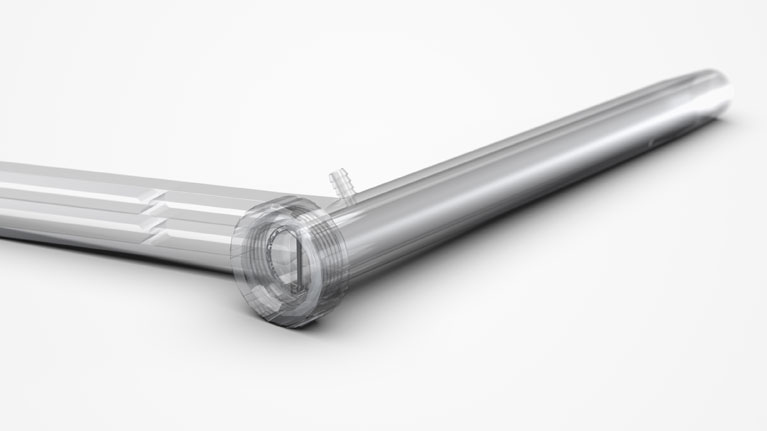Tekniker develops an innovative rectoscope to facilitate surgery in rectal cancer
The technology centre has been working to develop and manufacture a device consisting in a calibrate luminic rectoscope as an aid for surgeons when excising rectal tumours. The project has been carried out in collaboration with the Foundation for Biomedical Research at the La Paz University Hospital.

The Tekniker technology centre, member of the Basque Research and Technology Alliance (BRTA), has jointly developed with the Foundation for the Biomedical Research at the La Paz University Hospital in Madrid, a new prototype for a rectoscope which, thanks to its design, makes it easier for surgeons to manage rectal cancer operations.
Devices of this kind are usually equipped with a frontal light beam so clinicians can see inside the rectum. The new prototype that has been developed also incorporates a new feature in the form of a radial light source that helps the surgeon decide where exactly an incision must be made when removing a rectal tumour.
Surgery of this kind is performed to remove the segment of the rectum where the tumour is located and to connect both ends to maintain continuity. When doing so, a safety margin must be left between the tumour and the healthy tissue, a space that it is nowadays possible to reduce to only 1 cm. Although this poses major benefits for the patient, the incision must be made with total accuracy to avoid the risk of spreading the tumour and to guarantee oncological safety.
The development of this new luminic rectoscope, in which Tekniker has also been involved, has been specifically designed to meet this requirement, as the device lets light through to enable the surgeon to decide where the incision must be made between the tumour and the healthy tissue in order to create a suitable safety margin.
As the rectum is a hollow and translucent organ, this feature allows the surgeon (whilst monitoring the external layer) to know exactly where the incision must be made with the help of an assistant monitoring via the rectoscope.
A transparent device
Tekniker, a specialist in terms of designing, developing and manufacturing precision equipment, has taken into account the medical requirements applicable to the new rectoscope and, based on them, has addressed the design and manufacture of a prototype according to requirements related to biomedical and mechanical compatibility and transparency, which are essential to provide visibility and allow light to pass through.
The centre was also entrusted with the task of developing a prototype for the rectoscope’s outer casing, i.e., the part that is inserted inside the patient that is equipped with a ruler and the device carrying the light beam.
Tekniker has applied its extensive technological expertise to product engineering, advanced manufacturing and health care equipment to design and develop a functional prototype for the rectoscope that is currently undergoing preclinical trials on animals which will represent a major step forward in terms of the surgical removal of rectal tumours.
